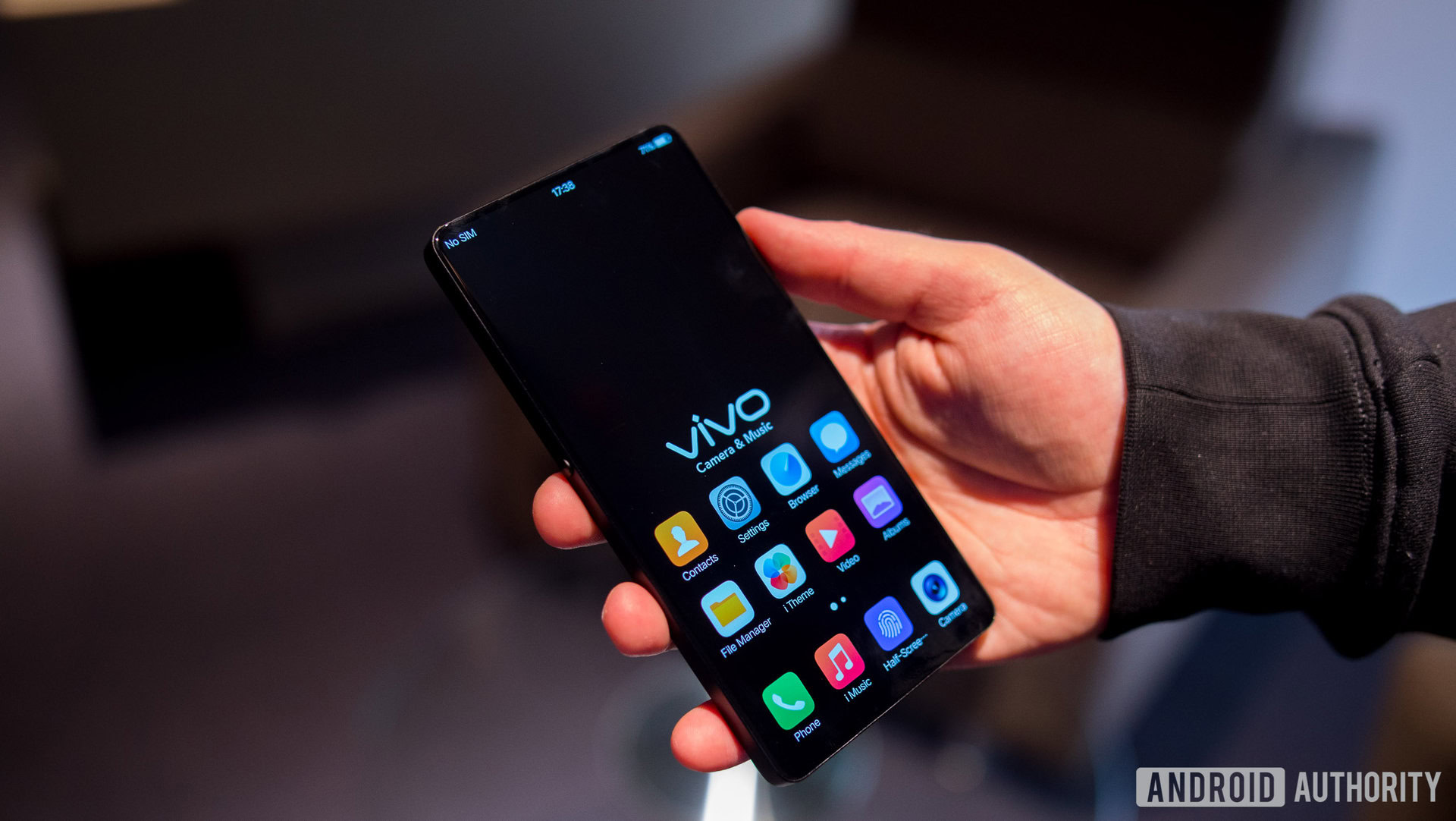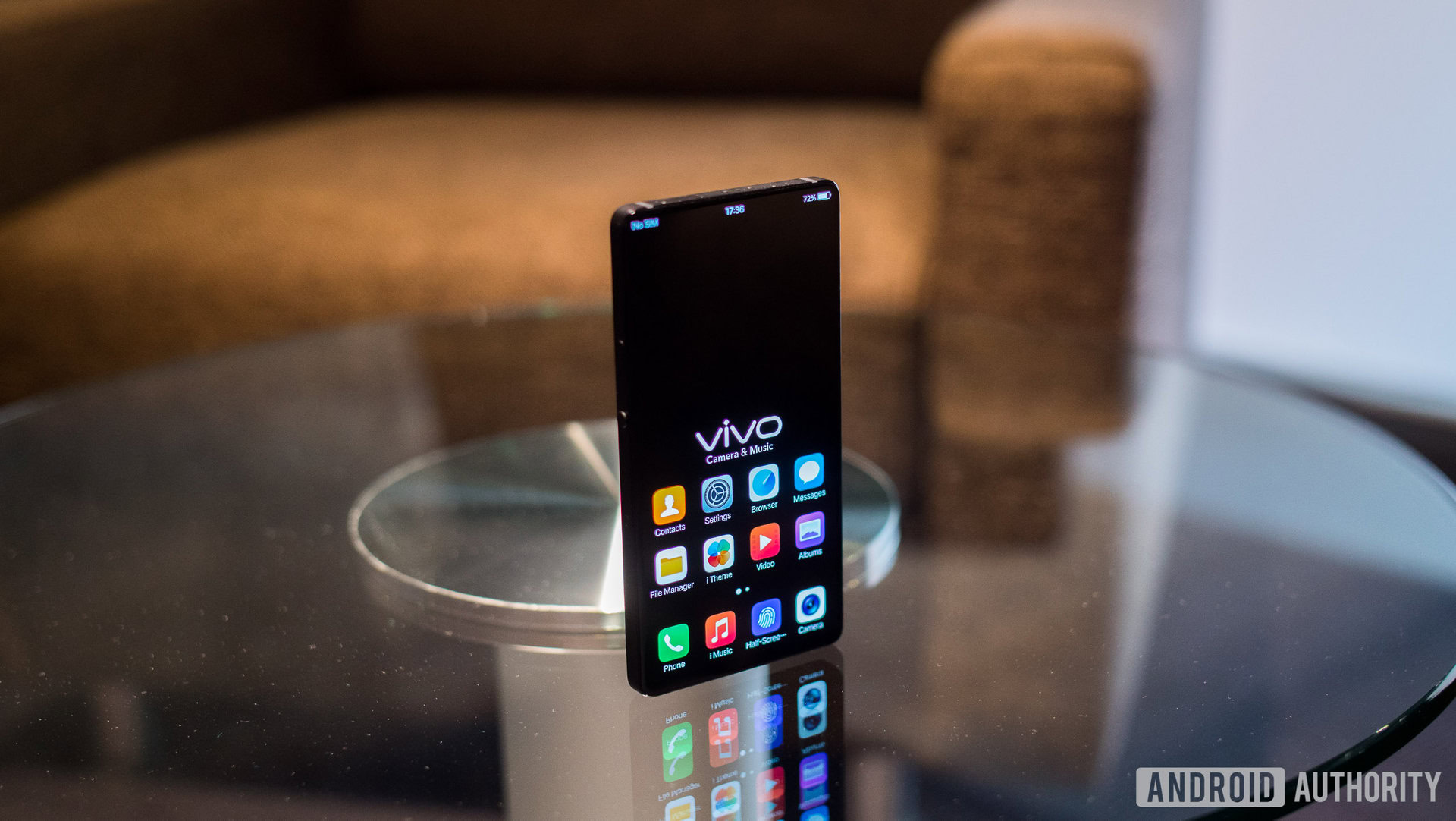Affiliate links on Android Authority may earn us a commission. Learn more.
vivo takes its In-Display Fingerprint Scanning Technology to another level

Hot on the heels of its in-display fingerprint scanner announcements CES 2018 and its X20 Plus UD handset, vivo has unveiled its new APEX concept smartphone that builds on the cutting edge fingerprint technology. The APEX boasts the company’s Half-Screen In-Display Fingerprint Scanning Technology, which as the name suggests means that the entire bottom half of the display works as a fingerprint scanner. vivo is the first company to demonstrate such a technology.
Increasing the area that users can register a fingerprint has the immediate benefit of more consistently registering your fingerprint, with less dependency on correct positioning and orientation. It’s simply going to work better. Let’s not forget that embedding the technology in the display is more convenient than previous systems and enables a more natural interaction for unlocking your phone, rather than having to reach for a dedicated button or piece of scanning hardware.
So let’s explore how vivo has managed to get this technology working.
![Vivo[1]](https://www.androidauthority.com/wp-content/uploads/2018/02/Vivo1.jpg)
How it works
The foundation of vivo’s in-display fingerprint scanner is an optical technology, rather than resistive, capacitive, or even ultrasonic sound. Optical fingerprint readers aren’t a new technology, some of the earlier designs were based on this idea, but vivo’s approach makes use of some very modern technological trends.
When a user touches the screen, the OLED display emits light to illuminate the user’s finger. This light is then reflected and captured by a sensor embedded below the display element. To ensure an accurate reading, the display also requires a small amount of pressure to be applied to the screen’s surface, which is mediated by a traditional touch element.
The screen has to be able to detect where the user is pressing, capture the data in the right place, and orientate it correctly in order to match the fingerprint. It’s quite impressive that vivo has managed to scale up this technology so quickly
This light sensor is able to detect ridges in each fingerprint pressed against the display, therefore drawing an accurate and unique picture of your fingerprint. The breakthrough with vivo’s design is that it’s able to scale up the size of this sensor. So the original version offered a smaller sensor under just one portion of the screen, while the new half-screen variant uses a larger sensor to increase the available scanning region.
When you think about it, this is considerably more involved than a single placement. The screen has to be able to detect where the user is pressing, capture the data in the right place, and orientate it correctly in order to match the fingerprint. It’s quite impressive that vivo has managed to scale up this technology so quickly.
Despite the general move towards capacitive rather than optical scanners in a lot of recent smartphones, vivo states that its technology is just as secure as other sensors on the market. Not just for unlocking your phone, but it also meets the stringent industry requirements for payment authentication.

New features and the future
As well as added convenience and a wider sensor area, vivo’s in-display technology introduces the ability to register multiple fingerprints at once. The in-display scanner’s multi-touch capabilities allows for up to two fingerprints to be scanned at different points. This means that its potentially twice as secure as other scanners, as manipulating or duping the system with fake scans becomes notably more difficult as you scale up the number of prints used for verification.
vivo isn’t done here though, the company views its half-screen technology as just step three on a four step development of the fingerprint scanner. The next step that vivo is planning is an in-display fingerprint scanner than works across the entire display, allowing the user to scan at angle and any position across the whole screen.
![Vivo[3]](https://www.androidauthority.com/wp-content/uploads/2018/02/Vivo3.jpg)
Closing thoughts
Fingerprint scanners are a universal smartphone feature these days, but the drive for thinner bezels, ever slimmer phones, and more natural interactions don’t fit well with the traditional front placed home button fingerprint scanner.
The APEX showcases vivo’s commitment to innovative next-generation technologies
Moving the scanner to the back has been a reasonable compromise for many smartphone brands, but it has its own drawbacks particularly in terms of quick unlocking. Embedding the scanner in the display is certainly the better option. Not only does vivo’s latest half-screen technology improve ease of use and enable the trend in slim, bezel less form factors, it also arrives complete with new and improved security features like multiple print scanning.
Vivo’s in-display technology is undoubtedly promising, and they’ve made it come true with X20 Plus UD handset. The APEX remains a concept phone at the moment, showcasing vivo’s commitment to some innovative next-generation technologies, but hopefully we’ll see a commercial product complete with this or vivo’s full in-display scanner sometime soon.
In the meantime, be sure to keep up to date on news of the APEX by checking out vivo’s official website, along with its Facebook and Instagram accounts.